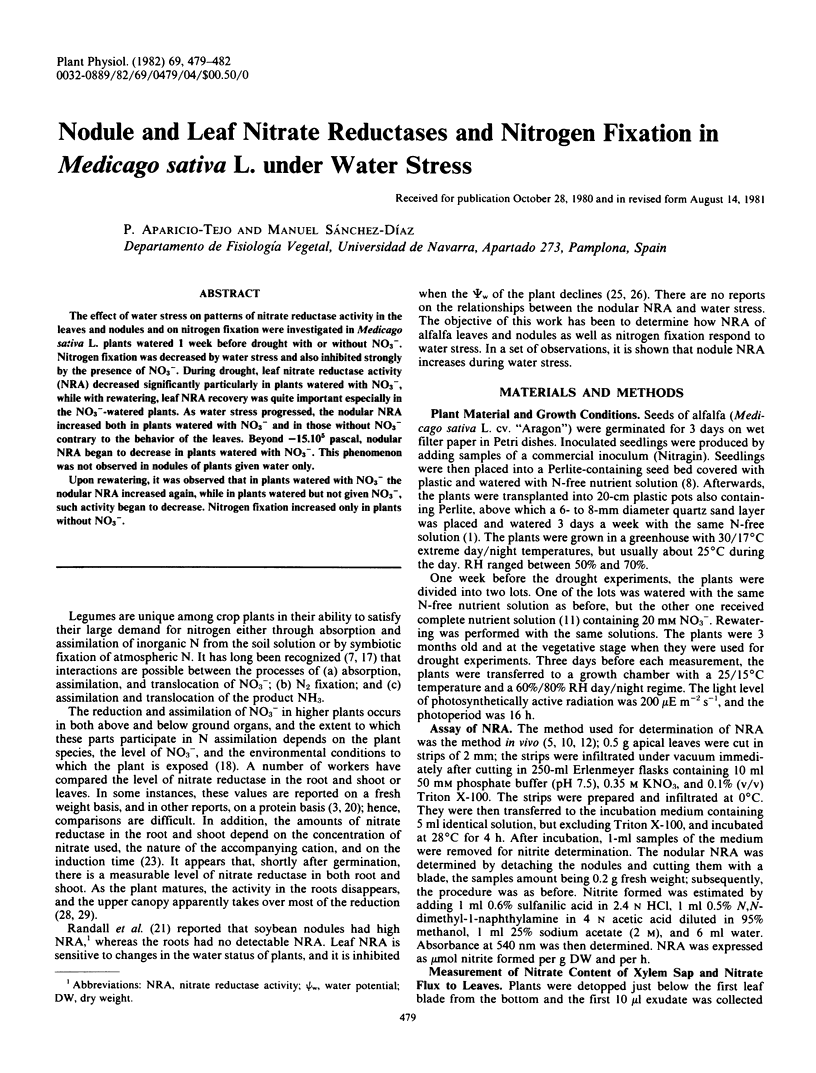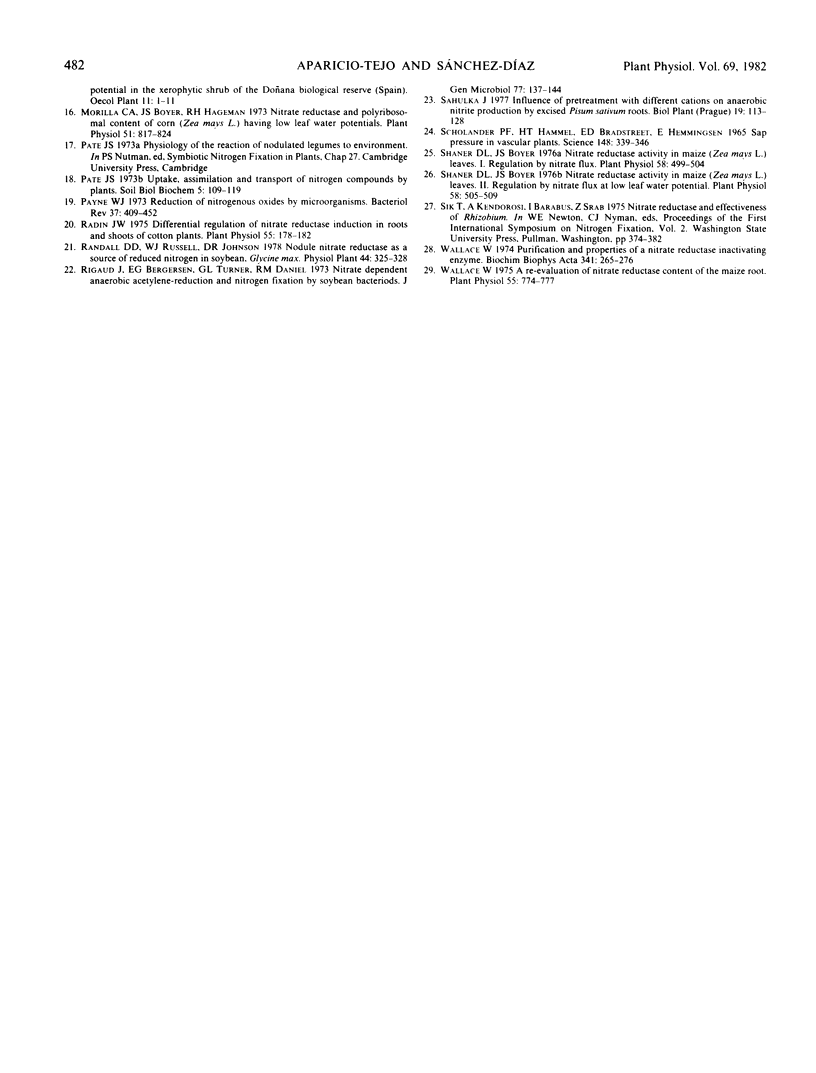Abstract
The effect of water stress on patterns of nitrate reductase activity in the leaves and nodules and on nitrogen fixation were investigated in Medicago sativa L. plants watered 1 week before drought with or without NO3−. Nitrogen fixation was decreased by water stress and also inhibited strongly by the presence of NO3−. During drought, leaf nitrate reductase activity (NRA) decreased significantly particularly in plants watered with NO3−, while with rewatering, leaf NRA recovery was quite important especially in the NO3−-watered plants. As water stress progressed, the nodular NRA increased both in plants watered with NO3− and in those without NO3− contrary to the behavior of the leaves. Beyond −15.105 pascal, nodular NRA began to decrease in plants watered with NO3−. This phenomenon was not observed in nodules of plants given water only.
Upon rewatering, it was observed that in plants watered with NO3− the nodular NRA increased again, while in plants watered but not given NO3−, such activity began to decrease. Nitrogen fixation increased only in plants without NO3−.
Full text
PDF



Selected References
These references are in PubMed. This may not be the complete list of references from this article.
- Aslam M., Oaks A. Effect of glucose on the induction of nitrate reductase in corn roots. Plant Physiol. 1975 Nov;56(5):634–639. doi: 10.1104/pp.56.5.634. [DOI] [PMC free article] [PubMed] [Google Scholar]
- Brunetti N., Hageman R. H. Comparison of in Vivo and in Vitro Assays of Nitrate Reductase in Wheat (Triticum aestivum L.) Seedlings. Plant Physiol. 1976 Oct;58(4):583–587. doi: 10.1104/pp.58.4.583. [DOI] [PMC free article] [PubMed] [Google Scholar]
- Jaworski E. G. Nitrate reductase assay in intact plant tissues. Biochem Biophys Res Commun. 1971 Jun 18;43(6):1274–1279. doi: 10.1016/s0006-291x(71)80010-4. [DOI] [PubMed] [Google Scholar]
- Klepper B. Diurnal pattern of water potential in woody plants. Plant Physiol. 1968 Dec;43(12):1931–1934. doi: 10.1104/pp.43.12.1931. [DOI] [PMC free article] [PubMed] [Google Scholar]
- Morilla C. A., Boyer J. S., Hageman R. H. Nitrate Reductase Activity and Polyribosomal Content of Corn (Zea mays L.) Having Low Leaf Water Potentials. Plant Physiol. 1973 May;51(5):817–824. doi: 10.1104/pp.51.5.817. [DOI] [PMC free article] [PubMed] [Google Scholar]
- Payne W. J. Reduction of nitrogenous oxides by microorganisms. Bacteriol Rev. 1973 Dec;37(4):409–452. doi: 10.1128/br.37.4.409-452.1973. [DOI] [PMC free article] [PubMed] [Google Scholar]
- Radin J. W. Differential regulation of nitrate reductase induction in roots and shoots of cotton plants. Plant Physiol. 1975 Feb;55(2):178–182. doi: 10.1104/pp.55.2.178. [DOI] [PMC free article] [PubMed] [Google Scholar]
- Scholander P. F., Bradstreet E. D., Hemmingsen E. A., Hammel H. T. Sap Pressure in Vascular Plants: Negative hydrostatic pressure can be measured in plants. Science. 1965 Apr 16;148(3668):339–346. doi: 10.1126/science.148.3668.339. [DOI] [PubMed] [Google Scholar]
- Shaner D. L., Boyer J. S. Nitrate Reductase Activity in Maize (Zea mays L.) Leaves: I. Regulation by Nitrate Flux. Plant Physiol. 1976 Oct;58(4):499–504. doi: 10.1104/pp.58.4.499. [DOI] [PMC free article] [PubMed] [Google Scholar]
- Shaner D. L., Boyer J. S. Nitrate Reductase Activity in Maize (Zea mays L.) Leaves: II. Regulation by Nitrate Flux at Low Leaf Water Potential. Plant Physiol. 1976 Oct;58(4):505–509. doi: 10.1104/pp.58.4.505. [DOI] [PMC free article] [PubMed] [Google Scholar]
- Wallace W. Purification and properties of a nitrate reductase-inactivating enzyme. Biochim Biophys Acta. 1974 Mar 21;341(1):265–276. doi: 10.1016/0005-2744(74)90087-4. [DOI] [PubMed] [Google Scholar]


